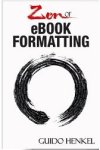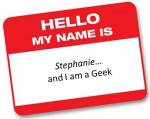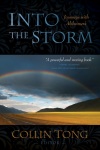Releasing a new book is a lot of work!
I’m not complaining, I’m just saying…
After the writing—and rewriting—and then handing your sort-of-but-not-quite-finished baby over to others to read and give you comments, there’s a lot more rewriting, then editing, then polishing. And then, there’s the formatting.
Yes, I said formatting.
I chose to publish independently, and I’ve chosen to do my own formatting—for both the text of the paperbacks and for the eBooks. As a technical writer, I spend a lot of time formatting other  people’s documents, so I figured I might as well put those skills to use formatting my own. And I am grateful to people like Aaron Sheperd and Guido Henkel, who are willing to share their more specialized knowledge with people like me. Sheperd’s Perfect Pages is a valuable resource for using Microsoft Word to set up the content file of a paperback book. Henkel’s Zen of eBook Formatting (an expansion of his 2010 blog series “Take Pride in your eBook formatting”) is an easy-to-follow guide to converting a document file to HTML and from there to various eBook formats. Henkel’s 2010 blog series provides all the basics, but the book offers some updates and some more advanced techniques. I followed the instructions in the blog for my first book, and I used Zen of eBook Formatting for my second.
people’s documents, so I figured I might as well put those skills to use formatting my own. And I am grateful to people like Aaron Sheperd and Guido Henkel, who are willing to share their more specialized knowledge with people like me. Sheperd’s Perfect Pages is a valuable resource for using Microsoft Word to set up the content file of a paperback book. Henkel’s Zen of eBook Formatting (an expansion of his 2010 blog series “Take Pride in your eBook formatting”) is an easy-to-follow guide to converting a document file to HTML and from there to various eBook formats. Henkel’s 2010 blog series provides all the basics, but the book offers some updates and some more advanced techniques. I followed the instructions in the blog for my first book, and I used Zen of eBook Formatting for my second.
I flash my geek card proudly.
I love being able to format my own books. Yes, I spent hours setting up the book block for the print edition. Yes, I spent more hours setting up the HTML file. But when it’s all done, I can say, “I did that” and refer to the form of my books as well as their content. I’m proud of the different kinds of work I did to pull the final books together. It makes the publishing process seem more “artisanal,” to use the term Guy Kawasaki has popularized—sort of like I designed a table and then built and sanded and finished it as well.
Of course, I don’t do everything myself. I work with a very talented cover artist (check out Ravven’s website here), I rely on others for critiques and editing help, and I certainly don’t print the paperbacks. A lot of people make the finished book possible. But, as an independent author and publisher, the bulk of the work is mine.
Sometimes I long for the team that comes with a traditional publishing contract, and I may pursue the traditional path someday. But, for now, this independent path I’ve chosen suits me. I like working on all the different pieces-parts that come together to make the finished product. Yeah, there’s that geek card again. 🙂
What about you? Are you traditionally published or independently published? What about that particular path appeals to you?
Connect with me:
Website | Facebook | Twitter | Goodreads
I am the geeky independent author of the New Adult/Young Adult urban fantasy The Light-Bringer Series. Vol. 1, A Gift of Wings, is available now. Vol. 2, A Gift of Shadows, will be released next week–on Dec. 10!
I have also contributed stories (one fictional and one true) to the following volumes:






Very good
LikeLike
Thank you!
LikeLike
I admire your resourcefulness. Good luck with your books.
LikeLike
Thanks, Abbie!
LikeLike
You must have ESP, Stephanie. Your post has given me hope that I will be able to learn to format my own books. I am presently using CreateSpace but not doing the work myself. I hired someone to do it for me right before the concussion and all that followed. I sent him the manuscript then and when I told him I was recovering from the fall we put it on hold. It was actually six or seven months later that I contacted him and said I was ready. He was agreeable but I had to pay the fee over again. He has now formatted the book for me and as I began to proof it I realized I had made some serious errors (that are included in the e-book I published over a year ago). I did have the manuscript edited twice and I spent a lot of time on it, but I found misspellings, and the worst thing is that I had somehow given the description and thank-you page for the first book. Of course, this was when I was recovering from the concussion and just dealing with the Bipolar diagnosis. At any rate, yesterday as I began seeing all the mistakes I got pretty upset. Now I find out I can’t even make the changes in CreateSpace, I have to resubmit my manuscript. I have no idea if I’ll lose all the work the formatter has done, and if so, I guess I’ll have to pay him a third time! This made me realize I’d better learn to do it myself, fast,because at this rate I’ll be broke! So, another thing to learn, and I do agree with you that it is better and more self-fulling if you can do as much of the process of self-publishing as possible. I loved your post and am keeping it for reference. Mostly, you gave me confidence to learn to do these things myself. It may cost more in time, but definitely a lot less in money!
LikeLike
Oh, so sorry you had all the book issues to deal with on top of everything else, Linda. But, yes, there is hope of doing the formatting yourself. When I did the ebook edition of Wings, I had read through Guido Henkel’s blog posts, but nothing else. So, on a Thursday night after work, I sat down with the blog posts, followed his instructions, and by Sunday night, I had ebooks posted to Amazon & B&N. I wasn’t formatting that whole time. It also included downloading the ebook to my Nook to review, finding special characters that needed to be HTML coded that I’d missed and things like that. It’s doable. And, once you’ve done it once, it gets easier the second time. Because you have your book block from the first book (I just wrote the second book in that format) and the style sheet for the HTML file. There are a couple of pieces of software you need. Notepad++ (if you use a PC)–Henkel recommends something else for Mac users–and an ebook conversion software called Calibre. Both are free to download–with optional donations. I hope you don’t have to pay for the formatting a third time. 😦
LikeLike
Oops – Of course, I meant self-fulfilling!
LikeLike
Go geeks! I admire your dedication and willingness to go the distance. My work so far has been published by others, but the poetry (haiku/photos) will probably be mine to publish. There is hope for me yet.
Thank you for a very useful post. Loved it. Doris
LikeLike
Thanks, Doris! It has been a busy couple of months, but it’s all worth it. I got my proof copy for Shadows yesterday. It was nice to hold that paperback in my hands. 🙂
LikeLike
Go Indies! I self-pub too and did my own formatting, but used the basic instructions from Smashwords. Then I uploaded to all the various epubs using my Word file. I’m curious what more you did and why you converted to HTML. I’ve formatted my text for CreateSpace using their app, but haven’t done the covers yet. Soon. I’ll also have to investigate the books you mentioned.
Good post.
LikeLike
Thanks, Kate, and go, Indies, indeed! I used Smashwords too, but I used the HTML files to create my own Mobi & EPUB files for Amazon & B&N. Why? Because I read David Gaughran’s Let’s Get Digital, and that’s what he recommended doing. 🙂 He’s also the one who recommended Guido Henkel’s blog series. I opted out of Amazon & B&N distribution with Smashwords, but use them for Kobo, iBooks, etc. So, I end up with 4 files that I format myself (paperback book block, Smashwords Word file, Mobi, EPUB).
LikeLike
Loved the post, Stephanie! Although I’m not a “geek” (my eyes roll in the back of my head when I listen to my husband talk about all his video, computer, and tech-no savvy stuff!) but I have found other ways to do both Kindle and print formats using my old Pagemaker software and another ebook formatting software my husband discovered and shared with me. I’m blessed to have been both traditionally and indie-published, and I will continue in the Indie way so that I maintain more control, both of the product and income! GREAT POST!!
LikeLike
Thanks, Gayle! It’s cool to hear about the ways other writers do their formatting–as well as different writing processes, publishing paths, etc. It’s great that you can use Pagemaker. I know nothing about that, so I’ve stuck with Word–and the HTML for the ebooks.
LikeLike
Great post, Stephanie. So far I’ve had a small publisher doing the work for me but my time-travel novel for younger YA market is now ready for me to make decisions, having finished it last weekend. I’ve got an editor working on it just now, and a cover artist in the wings but I’m scared stiff of doing the formatting myself and the actual publishing. However, I feel I want to try. All information and advice is most valuable- thank you. I’ve downloaded the Amazon instructions for ‘getting ready to publish’ but your examples above look good. 🙂
LikeLike
I started down this Indie path when a colleague and fellow author recommended David Gaughran’s Let’s Get Digital (he just came out with a second edition, by the way). Then I did a lot of reading about indie publishing, mostly followed Gaughran’s advice for the digital books, and found other sources to help with paperbacks. I can’t remember who recommended the Sheperd book–maybe Zoe Winters in her indie publishing book or Scott Nicholson in The Indie Journey. Anyway, it’s been fun–and hard–and rewarding–and… I’ve made tons of mistakes–and sometimes I get caught in castigating myself for them–but I’ve learned SO MUCH. So, I’m probably making different mistakes with the second book. 🙂
LikeLike
I’m published by a small ebook publisher, so I don’t have to worry about formatting the pages myself. I too was a technical writer (doing training modules, both systems and operating procedures, in the pulp and paper industry) from 1992 to 2009 before I returned to newspapering as a reporter. So I could probably tackle formatting if I ever decide to go the indie route (I retired at 62 so I don’t have a whole lot of money to spend, though).
LikeLike
Pulp & paper? I work for for a paper company too–but on the carton side of the business, not the paperboard. Document control, SOPs, forms, training material, running quality reports. You could probably tackle the formatting too. As I said, I rather enjoy it. 🙂
LikeLike
I used CreateSpace and they make it so easy
But I still have to format and make the covers. Nice going. Cher’ley
LikeLike
You do the formatting of the text and make your covers, Cher’ley? I haven’t even tried making my own cover. It wouldn’t be pretty. 🙂 I haven’t used CreateSpace, so I don’t know how they work. For the paperbacks, I work with Lightning Source/Ingram for POD. I send them a PDF of the cover file and a PDF of the text.
LikeLike
I have totally self published. Then I went with what I term assisted self publishing. I wanted more eyes on the work, and wasn’t familiar with how to set things up for the internet. I too have played with the idea of traditional publishing. I guess I am just to impatient. The time it takes to find an agent that can get your work published traditional seems endless. I admire those who can do the majority of the work themselves. Perhaps someday I will as well.
LikeLike
I’ve heard one of the differences between the two forms of publishing described as self-publishing being “hurry up and wait” (meaning you hurry to publish and then wait to find a readership), while traditional publishing is “wait and hurry up” (meaning it takes a long time to get published and then you have to find a readership very quickly).
LikeLike